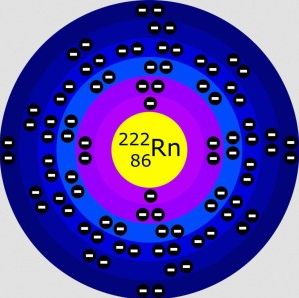
Ever wonder how much an atom weighs? One atom. Different varieties of atoms weigh different amounts—helium weighs one thing, lead another. But how can the weight of any sort of atom be determined to within reasonable accuracy? We present two simple methods to calculate atom weight.
Two Ways
One can calculate atom weight from knowing the weights of the constituent electrons, protons, and neutrons. If you know the weight of each of those and the number of each in an atom, you can readily calculate its weight. Yet, there is an easier and a better way.
Let’s pick an element out of the hat. Let’s take gold (If we can’t afford it, at least we can talk about it.). To calculate atom weight by method two, we need to look at the Periodic Table of the Elements. There we see gold, chemical symbol Au, as element number 79. At the bottom of the little square, we see the number 196.97. This is the atomic weight of gold. The atomic weight in grams of an element equals the weight of an Avogadro’s number of that element. Huh? What?
Avogadro’s Number
Avogadro was a 19th century Italian chemist who studied the physical properties of gases. He stated that the volume of a gas at a given temperature and pressure does not depend upon the nature of the gas, but is the same for all gases. A constant was derived, which was later named in his honor. That number is currently placed at
Nav = 6.022 x 1023 moles-1
Although this was derived in connection with gases, the number is the same for solids and liquids, also, as it is in terms of weight, and not volume. There is an Avogadro’s number of atoms of an element in a mole of that element.
Calculate Atom Weight – Gold
That being the case, the weight of a gold atom becomes,
w = (196.97 grams/mole) / 6.022 x 1023 moles-1
Since the mole units cancel out, we are left with the weight of the gold atom in grams. The math gives us
Result: w = 3.27 x 10-22 grams per atom.
Checking by Method One
We’ve just learned the simplest way to determine the weight of an atom of any particular element. Let’s perform the check using the weights of electrons, protons, and neutrons. This would not be so easy if gold had a number of isotopes. Gold has only one stable isotope however. What does this mean? An isotope is an element that has the same number of protons and electrons as any other atom of an element, but a differing number of neutrons. What makes it more difficult is that percentages of isotopes found in nature vary for different elements.
Does this make it clear why method two is much simpler to use in determining the weight of an atom of an element than method one? If we want to know the weight of a particular isotope, however, the first method is superior, since the Periodic Table assumes a mixture of isotopes.
Gold found in nature has 79 protons, 79 electrons, and 118 neutrons. The weight of a proton in grams is 1.673 x 10-24 grams. The weight of a neutron is 1.675 x 10-24 grams. The weight of an electron is 1/1836th the weight of a proton, so it weighs 9.11 x 10-28 grams. This gives us,
w = (79 x 1.673 x 10-24) + (79 x 9.11 x 10-28) + (118 x 1.675 x 10-24) grams
From this we calculate,
w = (132.2 + 0.0720 + 197.7) x 10-24 grams
Result: w = 3.30 x 10-22 grams/atom
The results are the same to within one percent.
Why the One-Percent Difference?
It ought first to be noted that for most purposes, this one-percent difference is quite acceptable. As to why there is a difference? There are a number of reasons for it. We rounded off Avogadro’s number down. We rounded the weights of the subatomic particles.
Also, the weight of an atom is not strictly equal to the weight of all its subatomic particles. The reader is doubtless well aware that atomic fission is sometimes called “atom splitting.” The energy given off by the splitting of an atom is tremendous. Curiously, the energy weighs something. In fact, how much it weighs can also be calculated according to Einstein’s equation,
E = mc2
The mass, or for our purposes, the weight of energy can be found by changing this around to,
m = E/c2
This weight (actually, mass) is added to the weight (mass) of an atom.
The combination of adjustments should put the result much closer to the mark than even the one percentage point of error.
Note: You may also enjoy Total Energy in One Hydrogen Atom
References:

If you calculate the weight of a gold atom by it’s FCC unit cell parameters and density, you end up with an error circa 25%. Any insight on why?
I believe it’s the atomic packing factor, since density measurements don´t distinguish the empty space between atoms.
Kayim, While I’m no expert in crystallography (and if I do my best to avoid it, I’ll be a happy fellow), from what I’ve examined, I’d say you may have answered your own question. You’ll have to admit my methods give more satisfying answers.
Thanks. I think this has just helped someone studying for an exam!
Great. I like that. What I don’t like to do is do other people’s homework or dissertation for them for money. That’s just wrong.